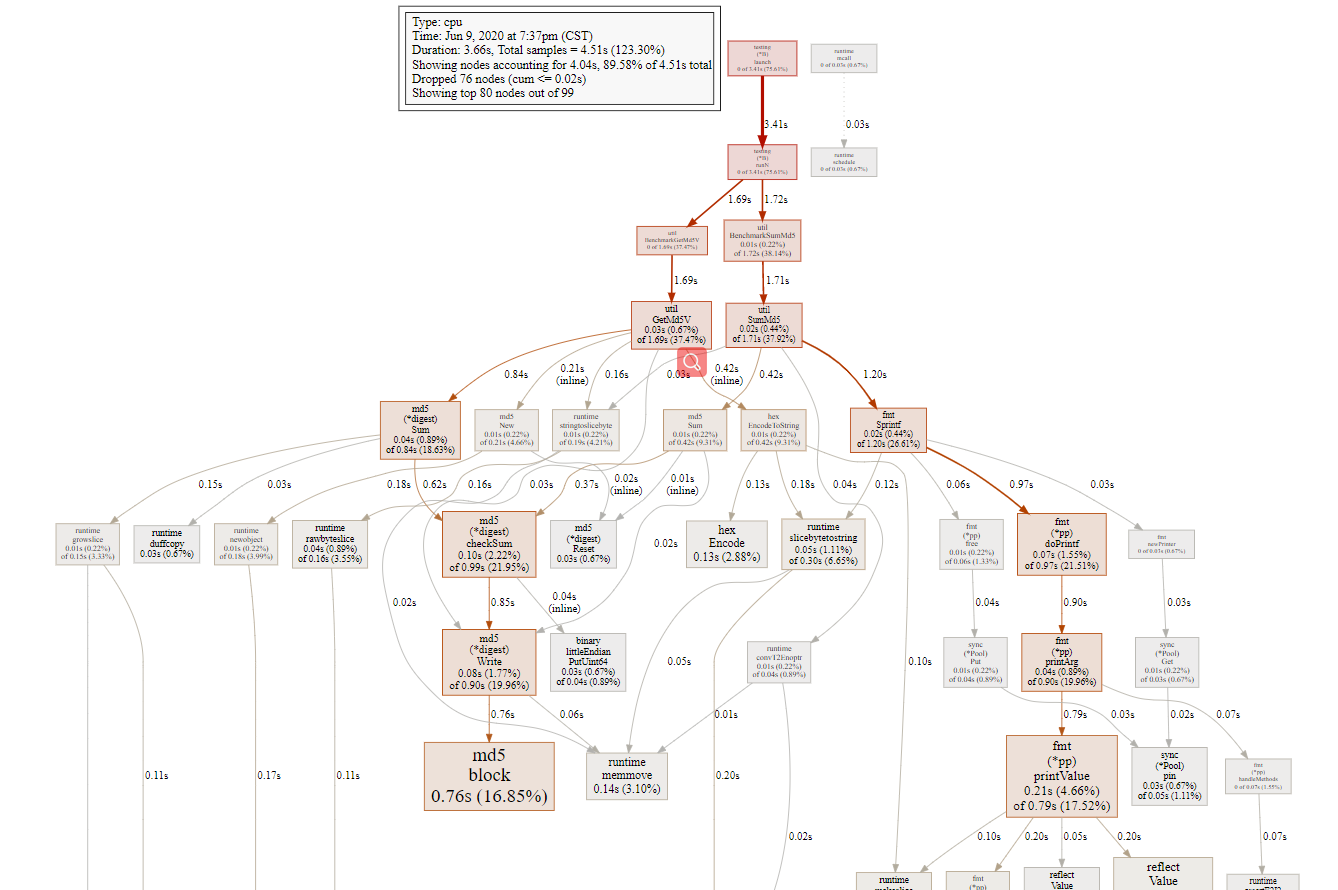Benchmark
新建测试文件
util.go文件
func GetMd5V(s string) string {
h := md5.New()
h.Write([]byte(s))
return hex.EncodeToString(h.Sum(nil))
}
func SumMd5(s string) string {
data := []byte(s)
return fmt.Sprintf("%x", md5.Sum(data))
}
以_test结尾的文件, 如util_test.go
func BenchmarkSumMd5(b *testing.B) {
for i := 0; i < b.N; i++ {
SumMd5("1")
}
}
func BenchmarkGetMd5V(b *testing.B) {
for i := 0; i < b.N; i++ {
GetMd5V("1")
}
}
运行Benchmark函数
go test -bench="." -benchmem
输出结果
BenchmarkSumMd5-8 1719777 847 ns/op 64 B/op 3 allocs/op
BenchmarkGetMd5V-8 1861362 644 ns/op 184 B/op 5 allocs/op
PASS
ok openapi/app/util 4.493s
- 第二列, 1719777, 1861362 代表执行的次数, 越高越好.
- ns/op 代表多少纳秒执行一次操作, 越低越好
- B/op 每次操作内存占用字节数, 越低越好
- allocs/op 每次操作内存分配次数, 越低越好
性能分析
go test -bench="." -cpuprofile=prof.out
go tool pprof prof.out
-blockprofilerate n:goroutine 阻塞时候打点的纳秒数。默认不设置就相当于 -test.blockprofilerate=1,每一纳秒都打点记录一下。-coverprofile cover.out:在所有测试通过后,将覆盖概要文件写到文件中。设置过 -cover。-cpuprofile cpu.out:在退出之前,将一个 CPU 概要文件写入指定的文件。-memprofile mem.out:在所有测试通过后,将内存概要文件写到文件中。-memprofilerate n:开启更精确的内存配置。如果为 1,将会记录所有内存分配到 profile。
使用Graphviz分析性能


- 标红的矩形是cpu耗时最长的.
- 线最粗的同理.
- 显示时有耗时与占比.一目了然.分析利器